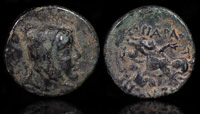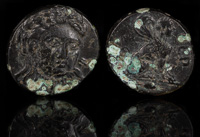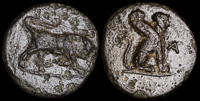Sphinx
View All Tags
The people of Thebes were desperate, as many had been eaten by the creature after failing to solve the riddle. The hero Oedipus eventually arrived at Thebes and, upon hearing the riddle, correctly answered: “Man, who crawls on all fours as an infant, walks on two legs as an adult, and uses a cane in old age.” This answer baffled the Sphinx, who, in her rage and defeat, threw herself off the rock and perished, thus ending her reign of terror over Thebes.
The Sphinx, with her mysterious and dangerous nature, embodies themes of knowledge, fate, and the perilous consequences of wisdom and understanding. In many versions of the myth, the creature is seen as a symbol of the inescapable dangers of fate and the need for cleverness and intelligence to overcome challenges. The Sphinx was often depicted in art and literature, sometimes as a formidable and enigmatic figure, and her role in Oedipus’ story was pivotal in shaping his tragic destiny.
In addition to the myth of Oedipus, the Sphinx also appears in earlier myths, such as those in Egyptian mythology, where the Sphinx was a symbol of royal power and wisdom, often linked with the pharaohs. The Greek interpretation, however, centers more on the theme of intellectual challenge and the dangers of riddles and secrets.

Ariarathes III 230-220 BCE

Chios 190-84 BCE

Delayah 375-333 BCE

Gergis, Troas 400-300 BCE

Kaunos, Caria 350-300 BCE

Pamphylia, Perge 260-230 BCE
